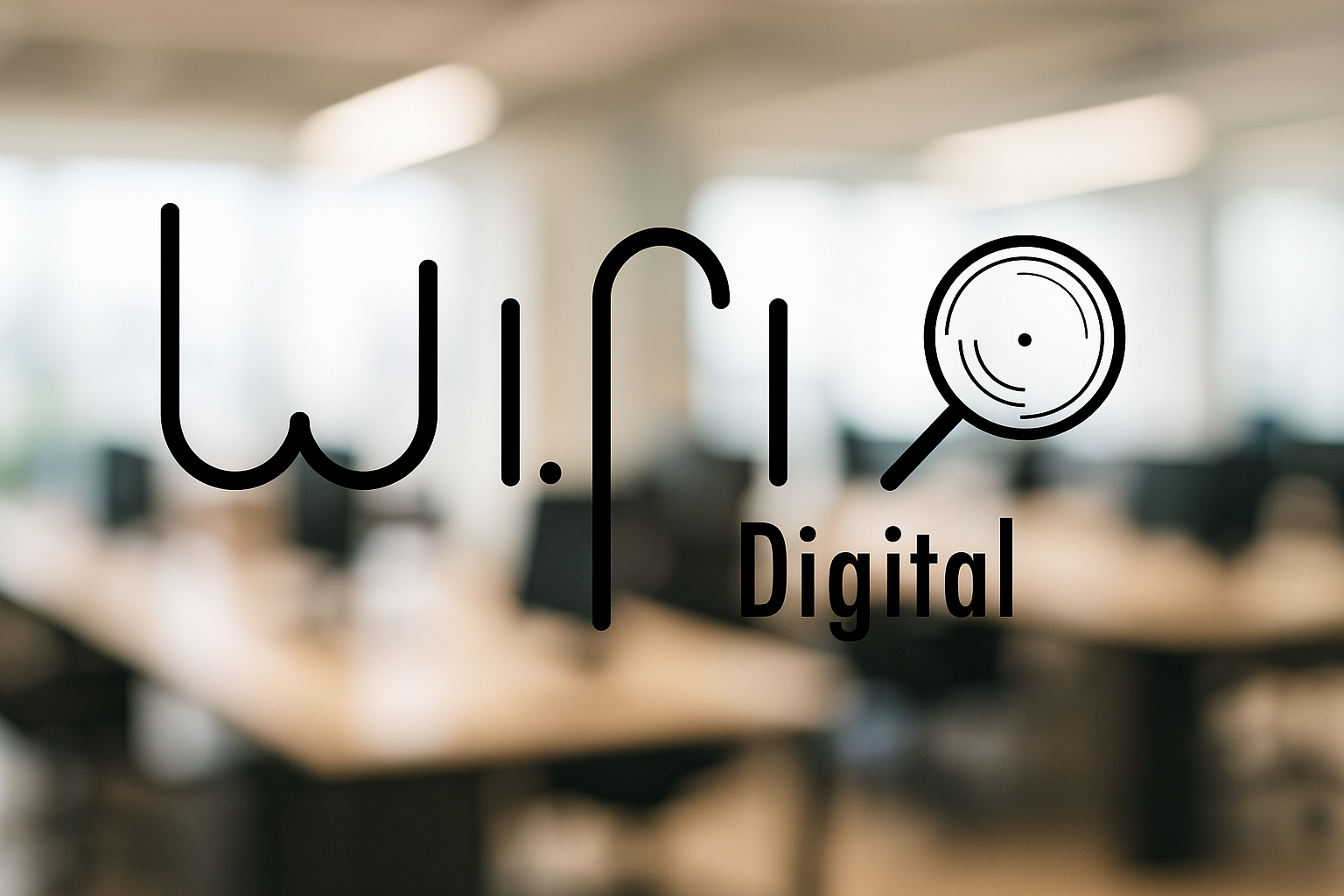In today’s digital landscape, a website’s visual appeal plays a crucial role in capturing audience attention. At WiFi Digital, we understand the significance of optimized visuals in enhancing user experience and driving business success. Our expertise in website design, development, and support enables us to guide businesses in leveraging the power of optimized images to boost their online presence.
With the ever-evolving digital trends, staying ahead of the curve is essential. Our article will explore the latest trends, tools, and techniques in website image optimization, providing insights into how businesses can harness these to improve their website’s visibility, credibility, and conversion rates.
The Power of Visual Content in Modern Web Design
The significance of visual content in contemporary web design is multifaceted, influencing both the user experience and the website’s visibility on search engines. Visual elements such as images play a crucial role in capturing users’ attention and enhancing their engagement with the website.
Optimized images are not just aesthetically pleasing; they are also crucial for web image SEO. Properly optimized images can significantly improve a website’s loading speed, which is a critical factor in search engine rankings. Moreover, techniques like image compression for SEO can further enhance a website’s performance by reducing the file size of images without compromising their quality.
Some key benefits of visual content include:
- Enhanced user engagement through captivating visuals
- Improved search engine rankings due to optimized images
- Faster website loading speeds resulting from effective image compression
By incorporating high-quality, optimized visual content, businesses can significantly improve their website’s overall performance, leading to a more engaging user experience and better search engine visibility.
Why Optimized Images for Websites Are Critical for Business Success
For businesses to succeed online, it’s essential to understand the significance of optimizing images on their websites, a factor that directly impacts their visibility and credibility. Optimized images play a pivotal role in enhancing website performance, improving user experience, and boosting search engine rankings.
The Impact on Website Performance
Optimizing images for websites is crucial for improving page speed, a key factor in user engagement and retention. Slow-loading pages can deter visitors, negatively affecting conversion rates and ultimately, business revenue. By optimizing images, businesses can significantly reduce page load times, thereby enhancing the overall user experience.
Enhancing User Experience and SEO
SEO-friendly images not only contribute to faster page loads but also improve the website’s search engine optimization. When images are optimized with relevant alt tags, descriptions, and file names that include target keywords, they become more discoverable by search engines. This practice can lead to improved rankings in image search results, driving additional traffic to the website.
WiFi Digital specializes in creating SEO-friendly images that drive business results. Their expertise in image optimization techniques ensures that businesses can maximize their online visibility, credibility, and conversion rates. By leveraging WiFi Digital’s services, businesses can stay ahead of the competition in the digital landscape.
Current Image Optimization Trends Reshaping the Web
The world of web images is undergoing a significant transformation, driven by the latest optimization trends. One of the key trends is the adoption of responsive image optimization, ensuring that images are delivered in the most appropriate format and size based on the user’s device and screen size.
Optimal image file formats are also crucial in this transformation. Formats like WebP and AVIF are gaining popularity due to their superior compression capabilities without compromising on quality. These formats offer better performance and faster load times, enhancing the overall user experience.
Moreover, the use of responsive images allows for a more flexible and adaptable web design, catering to the diverse range of devices and screen sizes used to access websites today. By incorporating these trends, businesses can significantly improve their website’s performance and user engagement.
At the heart of these trends is the goal to provide a seamless and efficient user experience. By leveraging the latest image optimization techniques, businesses can stay ahead of the curve and deliver high-quality, fast-loading websites that meet the evolving needs of their audience.
Core Optimization Techniques That Deliver Results
Effective image optimization is not just about reducing file sizes; it’s about implementing core techniques that improve page speed and user experience. At the heart of image optimization are practices that not only enhance the visual appeal of a website but also contribute significantly to its performance and search engine ranking.
One of the fundamental techniques is the use of image alt tags best practices. Alt tags provide a text description of images, which is crucial for search engines to understand the content of the images. This not only aids in image search rankings but also improves accessibility for users with visual impairments. Best practices include using descriptive and concise alt text that includes target keywords where relevant.
Another critical aspect is optimizing images for page speed. Large, unoptimized images can significantly slow down a website, leading to a poor user experience and higher bounce rates. Techniques for optimizing images include compressing images using tools like TinyPNG or ImageOptim, selecting the appropriate file format (e.g., WebP for web images), and using lazy loading to defer the loading of offscreen images.
To further enhance image optimization, consider the following strategies:
- Use descriptive file names that include target keywords.
- Implement responsive images that adapt to different screen sizes and devices.
- Utilize image compression tools to reduce file sizes without compromising quality.
- Leverage content delivery networks (CDNs) to distribute images across different servers, reducing latency.
By implementing these core optimization techniques, businesses can significantly improve their website’s performance, enhance user experience, and boost their search engine rankings. WiFi Digital’s expertise in image optimization can help businesses navigate these strategies effectively, ensuring that their websites are optimized for both search engines and users.
SEO Advantages of Properly Optimized Images for Websites
Properly optimized images can significantly boost a website’s search engine rankings. By incorporating SEO-friendly images, businesses can improve their online visibility, drive more traffic to their site, and ultimately increase conversions.
There are several key SEO advantages to optimizing images for websites. Some of the most significant benefits include:
- Increased search engine rankings due to improved image metadata and alt tags
- Enhanced website visibility through image search results
- Faster page loads and improved user experience
At WiFi Digital, we understand the importance of creating web image SEO strategies that drive business results. Our team of experts works closely with clients to optimize their images, ensuring they are not only visually appealing but also optimized for search engines.
Some key techniques we use include:
- Optimizing image file names and alt tags with relevant keywords
- Compressing images to reduce file size and improve page load times
- Using descriptive and keyword-rich image captions and metadata
By leveraging these techniques, businesses can improve their website’s SEO and drive more traffic to their site. With WiFi Digital’s expertise in creating SEO-friendly images, businesses can stay ahead of the competition and achieve their online goals.
Essential Tools for Streamlining Image Optimization Workflows
Effective image optimization is a cornerstone of modern web design, and there are several tools that can help streamline this process. To optimize images for SEO and improve website performance, it’s crucial to leverage the right set of tools.
Adobe Creative Suite
Adobe Creative Suite is a powerful toolset that includes Photoshop, a industry-standard for editing and optimizing images. With features like ‘Save for Web,’ it allows users to compress images for web use, reducing file size without significantly compromising quality.
Open-Source Alternatives
For those looking for free or low-cost alternatives, open-source tools like GIMP offer robust image editing capabilities, including features for optimizing images for the web.
Cloud-Based Compression Tools
Cloud-based tools like TinyPNG and ImageOptim provide easy-to-use interfaces for compressing images without losing quality. These tools are particularly useful for batch processing and can significantly reduce the file size of images.
Batch Processing Solutions
Batch processing solutions automate the image optimization process, allowing users to optimize multiple images at once. Tools like Bulk Resize and Kraken.io offer batch processing capabilities, saving time and effort.
WordPress Optimization Plugins
For WordPress users, plugins like WP Compress and Imagify can automatically optimize images upon upload, ensuring that all images on the site are compressed and optimized for SEO.
E-commerce Platform Solutions
E-commerce platforms like Shopify and WooCommerce have their own set of image optimization tools and plugins. These solutions help in optimizing product images, improving page load times, and enhancing the overall user experience.
By utilizing these essential tools, businesses can streamline their image optimization workflows, improve their website’s performance, and enhance their SEO rankings. At WiFi Digital, we understand the importance of image optimization and can help businesses choose the right tools for their needs.
Advanced Image Optimization Techniques for Performance-Focused Websites
To achieve peak performance, websites must employ sophisticated image optimization strategies, including responsive images and efficient file formats. This involves understanding the nuances of image optimization to enhance user experience and search engine rankings.
Responsive Image Optimization is critical for ensuring that images adapt seamlessly to various screen sizes and devices. Techniques such as using the srcset attribute allow browsers to choose the most appropriate image size based on the user’s device, thereby optimizing bandwidth usage and improving page load times.
Choosing the right image file formats for web is another crucial aspect. Formats like WebP offer superior compression and quality characteristics compared to traditional formats like JPEG and PNG. By leveraging modern image formats and compression techniques, websites can significantly reduce the file size of their images without compromising on quality.
Implementing Advanced Techniques
To effectively implement these advanced image optimization techniques, consider the following strategies:
- Utilize responsive image techniques to serve the most appropriate image size based on device and screen size.
- Adopt modern image file formats like WebP for better compression and quality.
- Leverage image compression tools to reduce file sizes without losing quality.
- Implement lazy loading for images to defer loading offscreen images until they are needed.
By adopting these advanced image optimization techniques, performance-focused websites can achieve faster load times, improved user experience, and enhanced search engine rankings. WiFi Digital’s expertise in image optimization can help businesses navigate these complex strategies and achieve their website performance goals.
Critical Image Optimization Mistakes That Harm Website Performance
Despite its importance, image optimization is often marred by critical mistakes that can slow down website performance. One of the most significant errors is poor alt tag usage. Alt tags are crucial not only for SEO but also for accessibility. Ignoring or misusing alt tags can lead to a subpar user experience and negatively impact search engine rankings.
Another common mistake is suboptimal image compression. While compressing images is essential for reducing file sizes and improving page load times, doing it incorrectly can lead to a loss in image quality. This can be particularly damaging for websites relying on high-quality visuals to engage their audience. Effective image compression strikes a balance between file size reduction and maintaining image quality.
- Failing to use descriptive file names for images.
- Not utilizing image lazy loading.
- Overlooking the importance of responsive images.
WiFi Digital emphasizes the importance of avoiding these common mistakes to create effective image optimization strategies. By understanding and implementing best practices, such as proper alt tag usage and optimal image compression, businesses can significantly improve their website’s performance. This not only enhances user experience but also contributes to better search engine rankings, ultimately driving more traffic and potential conversions.
By being mindful of these critical image optimization mistakes, website owners can ensure their site remains competitive and performs at its best. This involves staying informed about the latest trends and techniques in image optimization, as well as leveraging the expertise of professionals like WiFi Digital to guide the process.
Measuring and Analyzing Image Optimization Success
To understand the impact of image optimization on your website, it’s essential to track and analyze key performance metrics. Optimizing images for page speed is crucial, as it directly affects user experience and search engine rankings.
Key metrics to monitor include page load times, bounce rates, and search engine rankings. By analyzing these metrics, you can determine the effectiveness of your image optimization strategies and identify areas for improvement. For instance, if page load times are decreasing, it may indicate that your optimization efforts are successful.
Utilizing tools that provide insights into web image SEO can further enhance your optimization efforts. These tools can help you understand how your images are performing in search results and provide recommendations for improvement.
Some key performance indicators (KPIs) to focus on include:
- Average page load time
- Conversion rates
- Search engine ranking positions for targeted keywords
By regularly monitoring these KPIs and adjusting your image optimization strategies accordingly, you can achieve significant improvements in website performance and search engine visibility.
WiFi Digital’s Comprehensive Approach to Image Optimization
WiFi Digital’s image optimization approach is revolutionizing the way businesses approach website visuals. By leveraging cutting-edge techniques and tools, they help businesses improve website performance, increase visibility, and drive results.
Expertise in Image Optimization WiFi Digital’s team of experts has extensive experience in creating effective image optimization strategies that cater to the unique needs of each business. Their comprehensive approach includes analyzing website images, identifying areas for improvement, and implementing tailored optimization techniques.
The benefits of working with WiFi Digital include improved website performance, increased search engine rankings, and enhanced user experience. By optimizing images for websites, businesses can reduce page load times, improve conversion rates, and boost overall online visibility.
- Improved website performance through optimized images
- Increased search engine rankings and online visibility
- Enhanced user experience through fast and responsive website visuals
By partnering with WiFi Digital, businesses can tap into their expertise in website image optimization and stay ahead of the competition. With a focus on delivering results-driven solutions, WiFi Digital is the go-to partner for businesses seeking to optimize their website images and drive business success.
Emerging Technologies Shaping the Future of Web Images
The future of web images is being reshaped by emerging technologies that promise to revolutionize how we optimize and utilize visual content online. Advancements in image compression for SEO and responsive image optimization are at the forefront of this change.
One of the key emerging trends is the development of more sophisticated image compression algorithms that can significantly reduce file sizes without compromising quality. This not only enhances page load times but also improves the overall user experience. Moreover, advancements in responsive image optimization are enabling websites to serve images that are tailored to the specific device and screen size of the user, further optimizing performance.
These emerging technologies will have a profound impact on the field of image optimization. Businesses will need to adapt to these changes to remain competitive. WiFi Digital is at the forefront of this evolution, helping businesses stay ahead of the curve by leveraging the latest advancements in image optimization.
Some of the key benefits of these emerging technologies include:
- Improved page load times
- Enhanced user experience
- Better search engine rankings due to improved SEO
- Increased flexibility and adaptability across different devices and screen sizes
As these technologies continue to evolve, it’s clear that the future of web images will be shaped by innovations in image compression and responsive optimization. By staying informed and adapting to these changes, businesses can ensure they remain competitive in a rapidly changing digital landscape.
Building a Sustainable Image Optimization Strategy
As we’ve explored throughout this article, optimizing images for websites is crucial for enhancing user experience, improving page speed, and driving business success. By incorporating SEO friendly images into your web design, you can significantly boost your website’s performance and search engine rankings.
A sustainable image optimization strategy involves more than just compressing images; it requires a comprehensive approach that considers current trends, tools, and techniques. Optimizing images for page speed is a critical aspect of this strategy, as it directly impacts user engagement and conversion rates.
WiFi Digital’s expertise in image optimization can help businesses develop effective strategies that drive long-term success. By leveraging the latest technologies and best practices, you can ensure your website remains competitive and continues to deliver high-quality visuals that captivate your audience.
By implementing a well-planned image optimization strategy, you can improve your website’s overall performance, enhance user experience, and drive business growth.
WiFi Digital: Connecting Businesses to the Digital Future
In today’s fast-paced world, where a strong digital presence is essential for business growth, WiFi Digital emerges as a strategic partner for small and medium-sized businesses (SMBs). Founded in 2023 and based in London, Ontario, the company has a clear mission: to provide affordable, high-quality solutions that help businesses thrive online. With an experienced and passionate team, WiFi Digital goes beyond simply creating websites and marketing strategies. Its purpose is to empower entrepreneurs, strengthen brands, and give clients more free time to focus on what truly matters – growing their business and improving their quality of life.
WiFi Digital develops websites that authentically and professionally represent your brand, optimizes systems and digital marketing strategies to enhance visibility and return on investment (ROI), and offers affordable, customized solutions, ensuring that businesses of all sizes have access to effective growth tools. With transparency, partnership, and innovation, the company provides each client with the necessary support to achieve real results.
Business digitalization is not just about numbers or metrics. It directly impacts entrepreneurs’ well-being, bringing more organization, efficiency, and freedom to focus on what truly matters. WiFi Digital understands that by investing in digital solutions, businesses gain time, reduce operational stress, and create opportunities to connect better with their customers. A well-structured online presence not only increases sales but also strengthens the public’s trust in the brand.
Beyond technical expertise, WiFi Digital’s key differentiator is its commitment to people. The company values genuine relationships, creates tailored strategies, and works side by side with clients to ensure that every solution meets their specific needs. If you’re looking to boost your brand, attract more customers, and still have more time to focus on what truly matters, now is the time to act!
💡 Transform your digital presence with experts who understand your needs.
📩 Contact us now: contact@wifidigital.ca
🌍 Learn more: www.wifidigital.ca
🚀 Your growth starts here!



